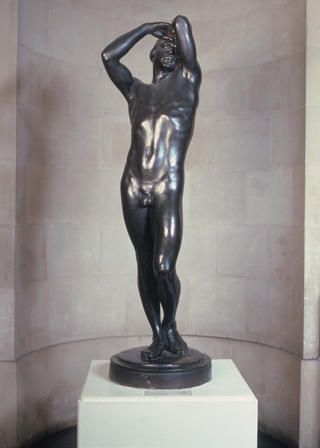Morpheus by Sir William Goscombe John
, 11 May 2015
‘Drown’d in drowsy sleep, of nothing he takes keep’. These were the words that William Goscombe John chose to accompany his sculpture Morpheus when it was first exhibited at the Royal Academy in 1891.
The caption was taken from the 16th century poem The Fairie Queene by Edmund Spenser, although it is not a direct quotation. This epic allegorical poem follows the journey of several Arthurian knights as they battle their way through a mythical fairyland.
Morpheus, the Greek god of dreams, plays a small role in The Fairie Queene. He is called upon to help the black sorcerer Archimago trap Redcrosse, one of the Christian knights. He does this by conjuring up a false dream of love and lust to fool Redcrosse into believing that his lover Una has been ‘sporting’ with another knight. This leads to Redcrosse abandoning her and continuing his quest alone.
In this sculpture Morpheus is shown asleep - or perhaps softly stirring from sleep, his arms stretched languidly above his head. Apart from this, John makes no other reference to the narrative of The Fairie Queene and it is not clear why he would have chosen to depict a figure who plays a relatively small role in the story, and in Greek mythology.
We might say that the mythological theme was a pretext for depicting a nubile male nude. Alternatively, we might see it as a statement about the role of the figurative sculptor. In mythology, Morpheus had one great power: he could mimic the human form, and trick people into seeing physical bodies that are not really there.
Stephanie Roberts and Penelope Hines
